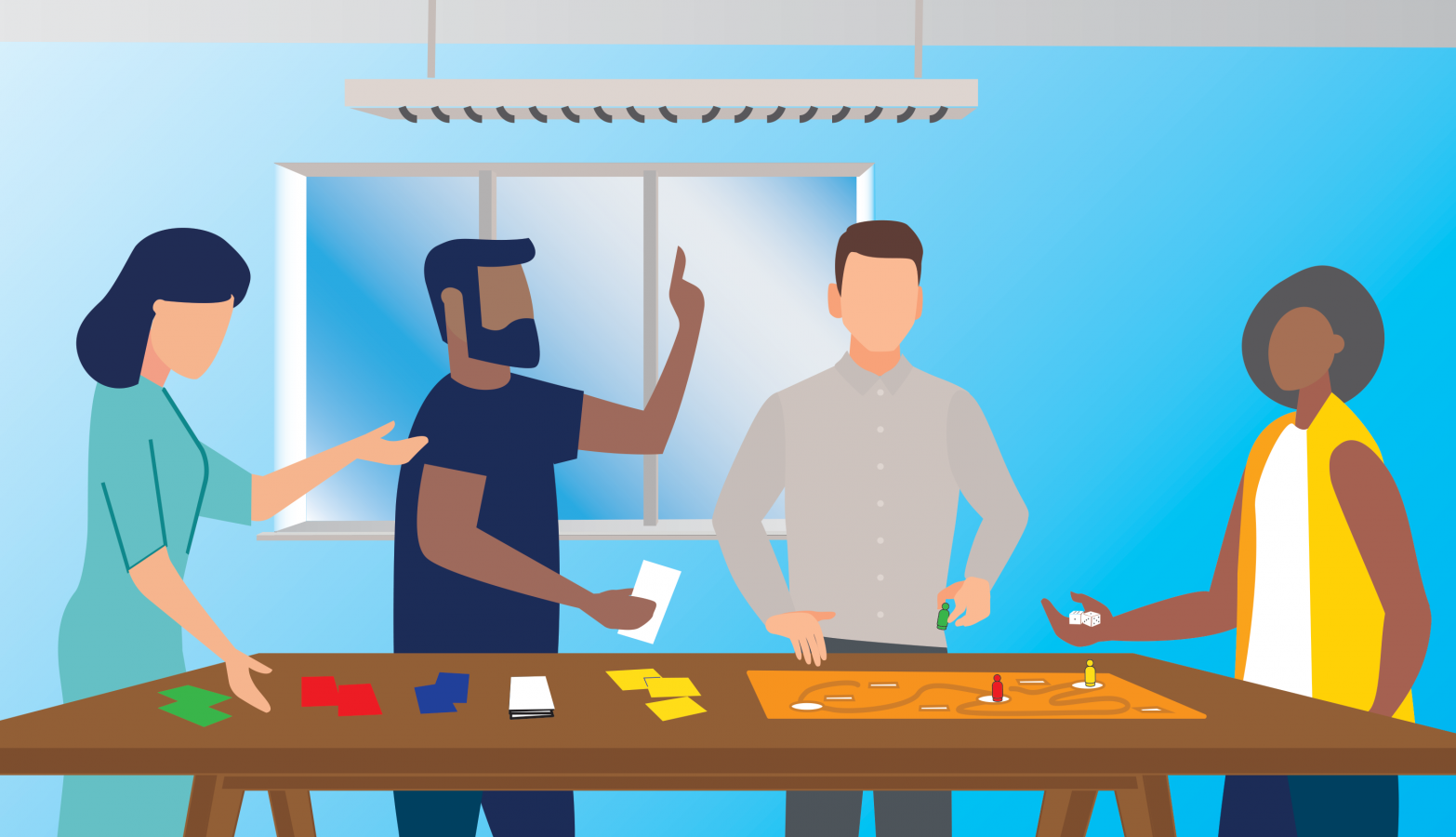The Secret to Developing Your Staff and Improving Performance
by Aric Wood
February 2, 2021

This article was originally published on Forbes.com.
While domestic companies spend a staggering $100 billion per year on corporate training, only one in four business leaders feels the results are worth the investment. One effective solution is a real game changer to this conundrum; it will engage employees and enhance performance—while offering fun along the way.
One of the biggest drivers in making a company a great place to work is—understandably—training and development.
In an increasingly competitive world, a company’s ability to grow and develop its workforce is critical to its ability to compete.
And yet, according to McKinsey & Company, while we spend over $100 billion per year on corporate training, only one in four business leaders surveyed believes these training investments correlate with improved business performance.
If this is true, 75% of our Learning & Development budgets are wasted every year, not to mention productivity lost due to work hours that are diverted to training.
A Fun and Unconventional Path to Improvement
At XPLANE, we believe there’s an underutilized and highly effective secret weapon to solve this problem: games.
Games, you say?
This is work, not play. We need courseware, digital platforms, learning management systems, measurable results.
But the problem here is that we often measure the wrong things. We can assess completion rates, test scores, and the like, but what we as business leaders really want to see is impact—changes to mindsets, behaviors, and practices that lead to better business outcomes.
This is where games come in.
Games tap into the core mechanisms that have guided how humans have learned forever—through play, observation, and group problem-solving, coupled with the feedback loops that result.
What Makes Games So Great?
Why are games so much more effective than traditional training programs?
- They allow for learning by failure, in a safe space. “Fail faster to succeed sooner” has long been a mantra of design thinking, but where do we actually encourage this with employees? Games are a remarkable platform that allow employees to experiment with new ways of working, in a consequence-free environment.
- They provide for much faster learning cycles than real-world experiences. While “learning on the job” has its benefits, it is also an incredibly expensive way for an organization to train employees. Games create an environment where learning cycles can be compressed. Employees have agency to try new ways of work and get rapid feedback from the game and its other players, allowing employees to learn in successive cycles of trial, error or success, and iterative optimization.
- They are more engaging for both individuals and groups. Recall that “play” is one of the primary ways that humans learn—for the reasons illustrated above, and because play is fun. Fun creates motivation to engage, and engagement leads to learning. And when you learn as a group, it’s magnified. People are already adapted to giving and receiving feedback from one another, accelerating learning cycles even more.
Games for Business Settings
In business environments, there are three types of games that XPLANE uses most regularly:
- Alignment games: These are usually played among groups of stakeholders to develop shared understanding of a challenge and begin to develop possible solutions. Alignment games help participants maintain focus, safely explore multiple potential paths, make tough tradeoffs, and diffuse tension when the issue at hand may be very stressful or serious. An example is a “card sort” exercise in which employees identify key organizational issues and then select possible solutions to the problem at hand.
- Activation games: Many strategies require a shift in organizational culture or behaviors to ensure success. They require new mindsets as well as commitment to working in new or better ways. Activation games, often simulations, are played to bring actions and mindsets to life in terms that individuals can apply and test, terms that help them understand the potential impacts and outcomes. These games allow players to internalize new mindsets and take ownership for how they will live them out. An example is a board game we developed for a senior leadership team to deploy their new strategy. Players had to learn the key tenets of the strategy and collaborate to apply the strategy correctly in order to win the game.
- Collaboration games: If you want teams to work well together, they must practice problem-solving together. Collaboration games are a powerful tool for both team building and learning. Examples of collaboration games include a “Team Design Challenge” where a group must work together to create a solution, using tools and frameworks provided to the group. These games help people work at an even deeper level, both learning new tools and learning to work more effectively together.
Putting Games into Play
How can you begin to use games in your Learning & Development program?
We recommend you start by identifying where in your Learning & Development program you’d like to change employee mindsets, behaviors, or practices.
If the goal is to transmit new or updated content in support of existing practices, traditional learning programs might suffice, but to develop new ways of working, games could be the fastest path to change—and lasting impact.
Want to learn more?
We recommend the following blog posts:
- How Using Gamification Moves Organizational Goals Forward
- A card game to identify reasons people resist change
- A card game to uncover the issues of growth, crisis, or change
- A Real Game Changer: Ways to Prepare Your Business for the Future
Or visit our store to learn more about our various card decks.
Finally, if you have thoughts or questions about how to use games to accomplish your Learning & Development objectives, please reach out to us!